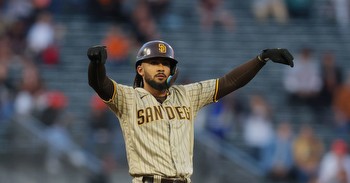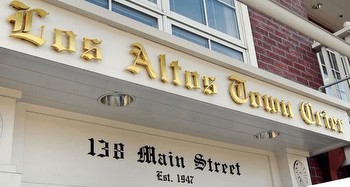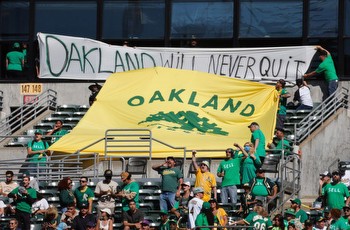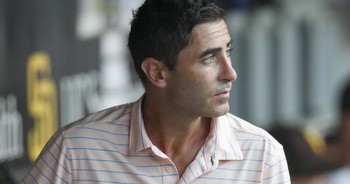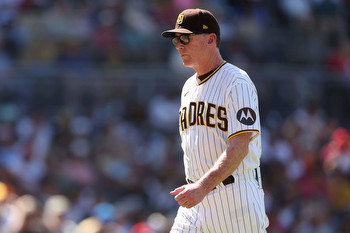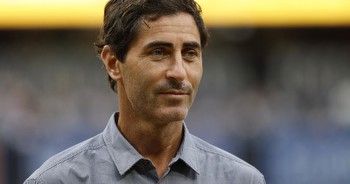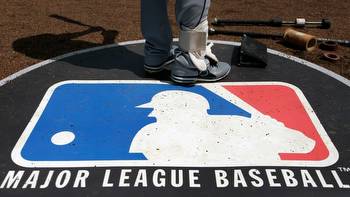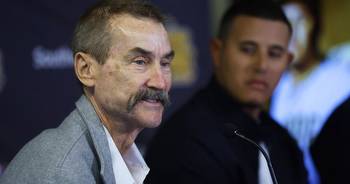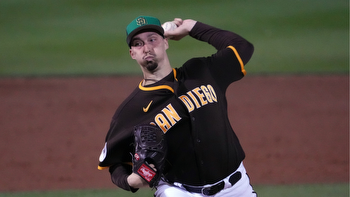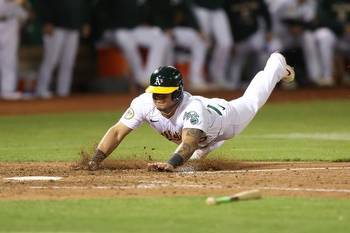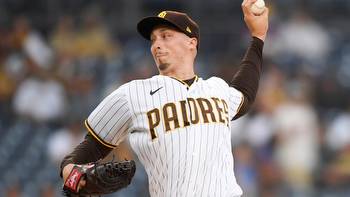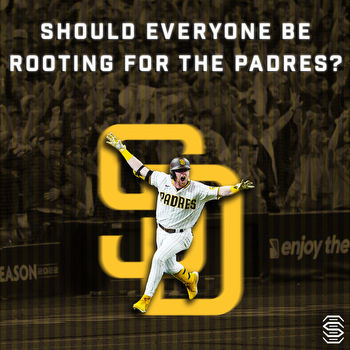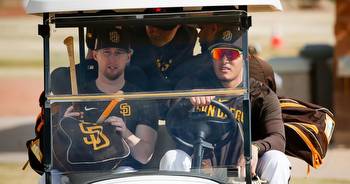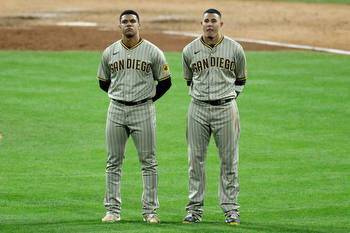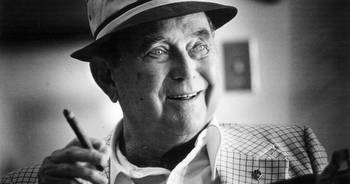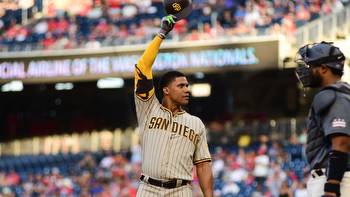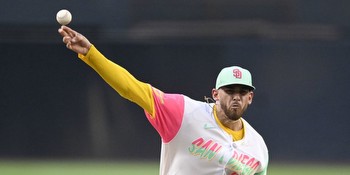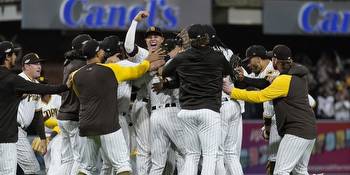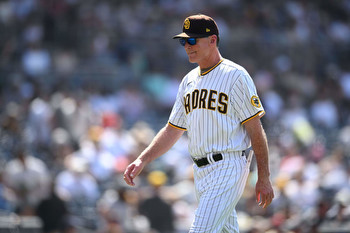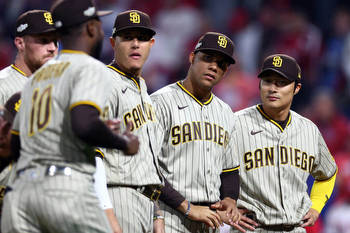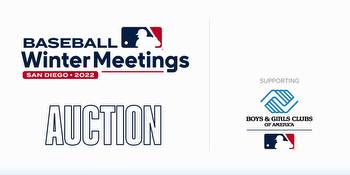Tom Krasovic: Padres right to induct John Moores, whose complicated tenure produced franchise-best results
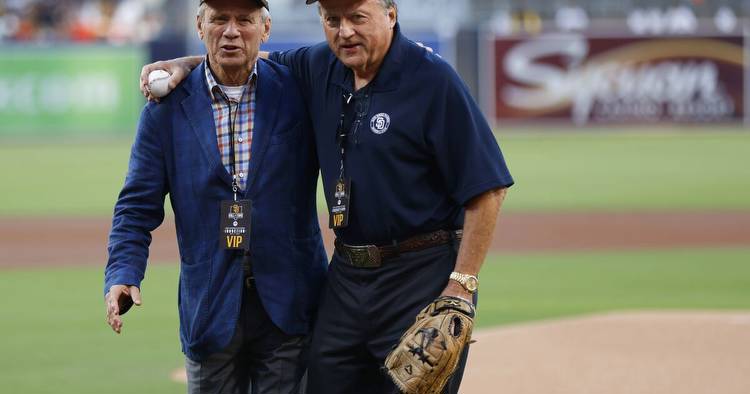
Lord knows that John Moores, like many billionaires, has not lacked for corporate media who celebrate his material accomplishments.
When you’re as wealthy and well-connected as the former longtime Padres majority owner, it’s not difficult to shape narratives that airbrush out all blemishes — even more so when Major League Baseball runs its own media empire, when the Wall Street Journal prints your essays and when the San Diego Union-Tribune publishes a full-page advertisement signed by pals who salute you.
But make no mistake: What Moores accomplished indeed merits much of the praise assigned to the forward-thinking former Padres majority owner.
The man got things done here. Big things. Full stop.
A warm ovation Friday night from Padres fans and other baseball fans in a capacity crowd would be deserving, now that Padres leaders, headed by chairman Peter Seidler, have inducted Moores, 79, into the ballclub’s Hall of Fame.
People in the know say a grassroots stamp of approval would matter dearly to Moores, whose wealth doesn’t make him impervious to public opinion and matters of legacy.
Though he royally goofed up one aspect of how he went about it, inappropriately giving gifts to a City Council member, Moores stands first among the persons responsible for Petco Park becoming a reality.
The East Village gem and cash machine shines as ample reason by itself for grateful Padres senior executives to enshrine Moores, whose majority ownership of the ballclub spanned from December 1994 through July 2012.
Moores’ tenure included four National League West titles, the winningest season in franchise history and the run to the 1998 World Series — days before San Diego voters approved a massive subsidy toward the ballpark’s construction.
Moores stands as not only the most accomplished Padres owner in the franchise’s 55-year history but the top owner of any San Diego sports franchise.
When folks say the Padres haven’t won anything, I say their ‘98 club — the fourth under Moores — accomplished more than many World Series champions have.
It rolled into September with a record 41 games above sea level. Winning the West race in a runaway set up a pitching staff led by Kevin Brown and Hall of Famer Trevor Hoffman for a playoff run through a pair of 100-plus game winners.
Two veteran hitters, each obtained via trades after Moores bought the club, assisted homegrown Hall of Famer Tony Gwynn in leading a deep offense. One was Greg Vaughn, who hit 50 home runs. The other was first baseman Wally Joyner, whose .415 batting average with runners in scoring position would arouse disbelief from today’s Padres fans.
Brown, the team’s MVP, had arrived in a trade months earlier. The deal was brokered by Moores’ point man on the ballpark project, team CEO Larry Lucchino, and the general manager Lucchino hired, Kevin Towers.
Unfortunately for the ‘98 Padres, they drew as a World Series opponent one of the sport’s all-time monsters in a Yankees club that had gone 114-48 in the regular season and 7-2 in the playoffs.
The four-game sweep didn’t discourage locals from approving the ballpark measure.
Many sports economists say subsidies of MLB and NFL palaces are overly expensive at best and a large waste of public money at worst. Media coverage of such subsidy campaigns skews largely toward cheerleading. Sports teams and leagues exploit their emotional leverage to extract ever-increasing sums of money from municipalities and states. Where in some countries laws make it much tougher for companies to, in effect, pit taxpayers against each other across city, county and state lines, such barriers don’t exist here.
It’s encouraging, then, that sports economists generally describe the Petco Park deal as relatively fair. Andrew Zimbalist, one of the leaders in the field, told the Union-Tribune last year that the Petco Park subsidy of $400-plus million in today’s dollars merits some praise — at least in contrast to New York state’s $800 million subsidy toward a new Buffalo Bills stadium.
San Diego’s ballpark has attracted generations of locals to downtown and lured hundreds of thousands of visitors from beyond the county over the two decades. Attendance this year will set a franchise record and place in MLB’s top five. And the surrounding real-estate development has benefited Moores and his business partners.
I doubt Moores or his inner circle are thrilled at how expensive the ballpark experience has become. The little guy has been squeezed out. What’s happened at the park outside the ballpark, known now as Gallagher Square, seems at odds with the everyman vision the Moores-era Padres implied when selling voters on the ballpark measure. Tickets to the green space have run as high as $85. And it stands to become a busy concert venue as well.
The moment voters approved the ballpark’s funding, further punctuating the franchise’s stunning four-year rise under the plain-spoken Texas transplant whose genius for software created his first fortune, Moores’ Hall of Fame induction here was all but assured.
Following the ballpark vote, though, his hand was less steady. Moores’ Padres stewardship sometimes veered into bizarre, such as when he put two unqualified leaders in charge in the early years after Lucchino departed.
There were complicating factors, but I believe Moores came to view Petco Park’s opener in 2004 as more of a finish line than a launch. The ballpark’s escalating cost demanded cash calls of Moores, curbing baseball investments. Even so, a timely opportunity to transform a competitive Padres club into a World Series-contending one may have been lost to Moores’ deep-seated discomfort with MLB’s soaring player salaries and open disdain for agent Scott Boras.
A Padres owner who combined the best traits of both Moores and Seidler may be what it takes to bring a World Series title to this small media-market.
From Moores: the good sense to hire an MLB-proven, World Series-winning executive leader in Lucchino and have him supervise a “gunslinger” or “rock star” of a general manager.
Not only did Lucchino drive the ballpark campaign, he oversaw baseball operations. The former Orioles president had the MLB chops to educate Towers — and, when necessary, wisely reign him in.
Current Padres wheeler-dealer A.J. Preller appears to have lacked a Lucchino-caliber “checks and balances” boss in his entire nine-year tenure.
Moores got it right, said Towers. Deep into his own career that would produce a fifth NL West title, with the Arizona Diamondbacks, the GM said Lucchino had provided him invaluable, if often caustic, guidance.
Seidler is willing to play ball with Boras and other powerful agents. The baseball results have been mixed, the ability to create buzz indisputably successful. But the “go for it” gusto Seidler has exmplified may have benefited the Padres about when the downtown ballpark opened. Quite possibly, Seidler would’ve heeded Padres baseball men and thus met the price for free-agent outfielder Vladimir Guerrero and the Boras-advised Stephen Drew, a mature shortstop entering the draft.
With Drew instead of Matt Bush coming to the Padres first overall and serving as trade chip if not a direct contributor, both players would’ve enhanced a fairly well-stocked franchise that would notch four winning seasons and two playoffs berths in the next four seasons.
As a result, a Padres team or two may have matched the fresh allure of a San Diego ballpark that, absent John Moores buying the club for $80 million from the Tom Werner group, may not have been built.

